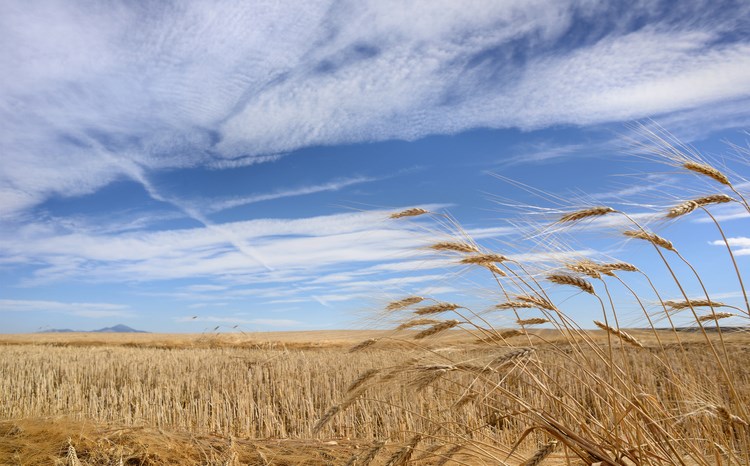One of the keynote speakers at this year’s Ag Outlook presentation was Brad Magnusson, the principal market analyst for key agricultural markets in North America and overseas at the Magnusson Consulting Group.
The Jan. 23 presentation was held in person and streamed online at the Living Sky Casino in Swift Current. There, Magnusson spoke about the economic outlook prairie farmers can expect to face in 2024.
The presentation covered four key areas affecting Saskatchewan’s agricultural industry. These areas included the impact of global economics considering recent international developments, the commodity cycle, the commodity outlook for 2024, and lastly, he addressed the cattle industry.
The outlook for 2024
In the presentation, Magnusson advised farmers in dryland areas to consider growing lentils in 2024, followed by durum, canola, and then peas.
Lentils: Magnusson said that lentils should be the most profitable crop in the 2024 growing season.
“If you haven’t grown (lentils), maybe consider them for (2024),” he explained. “That (crop) would give us one of the higher profitabilities (this year).”
Durum wheat: Durum wheat is also in high demand. “We’ve had small crops, and it’s been very dry in Algeria, the United States, (and in) Canada. We don’t have a lot of durum globally.”
He said that some durum has come into the market from Turkey, which adversely affected Canadian prices, but said Canadian producers retain well above average prices. After that, the markets fall off rather quickly.
Canola: “Canola is (also) a reasonable consideration. I have a lot of concerns about the canola market that we are not selling canola this winter very quickly, particularly to the overseas market,” he said. China is one of the larger markets to consider when exploring the future demand for canola.
Chickpeas: Chickpeas are categorized the same as peas for this assessment. Chickpea crops are fairly resistant to grasshoppers – which have been a problem in the area lately – and the flying, hungry pests prefer to invade a nearby wheat field if one is available.
“When you’re growing chickpeas, prices right now are very strong. There isn’t a lot of chickpeas growing in Saskatchewan.” He said global demand for the crop is high, especially in India.
His only concern with chickpeas is that they work best in a low-humidity environment. If we return to normal seasonal rains, he warned producers about the risk of developing moulds.
“It’s definitely an option for dryer conditions,” he said. “You just have to be very vigilant in putting your fungicides on (the crop).”
Red spring wheat: In the red spring wheat market, Magnusson said stock has moved downwards about 11.5 million tonnes in net change, but that hasn’t been reflected in prices for the crop yet.
“Russia is continuing to export tremendous amounts of wheat – about 51 million tonnes. That is absolutely substantial,” he noted. By contrast, Canada usually exports between 20 - 24 million tonnes of wheat annually.
“They’re exporting double what we can export, and that’s having an affect on that red spring wheat market.
“If I was looking at growing red spring wheat or durum, I think I would maybe shy away from the red spring wheat – especially in the drylands – and look at durum,” Magnusson said.
Feedback
After delivering his presentation, Magnusson received some important feedback from farmers.
“I think that they were concerned about the level of Russia’s (wheat) production, and the level of Brazil’s (soybean) production,” he said. “I think that they were cautiously optimistic as well.”
Magnusson said there are some good prices projected for lentils, durum, and chickpea crops, as well as canola, but farmers remain cautious because of how dry conditions have been.
Looking ahead
To help explain his forecast, Magnusson explored the nature of the commodity cycle. He said all commodities – including wheat and cattle – move in cycles and all tend to follow the same pattern.
During each cycle, prices come up, peak quickly, and then slowly start to flutter back down. According to Magnusson, the process takes around 10 years on average from start to finish.
“We’re about two-thirds of the way down the backside of the commodity cycle. We haven’t hit bottom yet – we’re probably about two years from hitting bottom. It takes a while – it (then) takes us about four, five, or six years to climb back up that commodity cycle,” he said.
This cycle is largely dependent on global Gross Domestic Product (GDP), and the higher the global GDP climbs, the faster Canadian producers will climb back up the cycle.
“China is the biggest buyer of commodities in the world. When they’re struggling with their GDP, that’s when we see countries like Canada – that are primarily (commodity-based economies) – have a tendency to suffer,” he explained.
China is currently the process of a large building phase due to a considerable housing crisis. Local producers can gain some valuable insights by following developments in China, as the country’s ability to purchase will climb back up once its domestic situation has been resolved.
“If I can give farmers one piece of advice, just stay on top of the markets, and certainly do everything to look at opportunities to save a few dollars here and a few dollars there. It’s going to get tougher and tougher if we continue to over-produce grain, be it in Brazil or in Russia,” Magnusson concluded.




